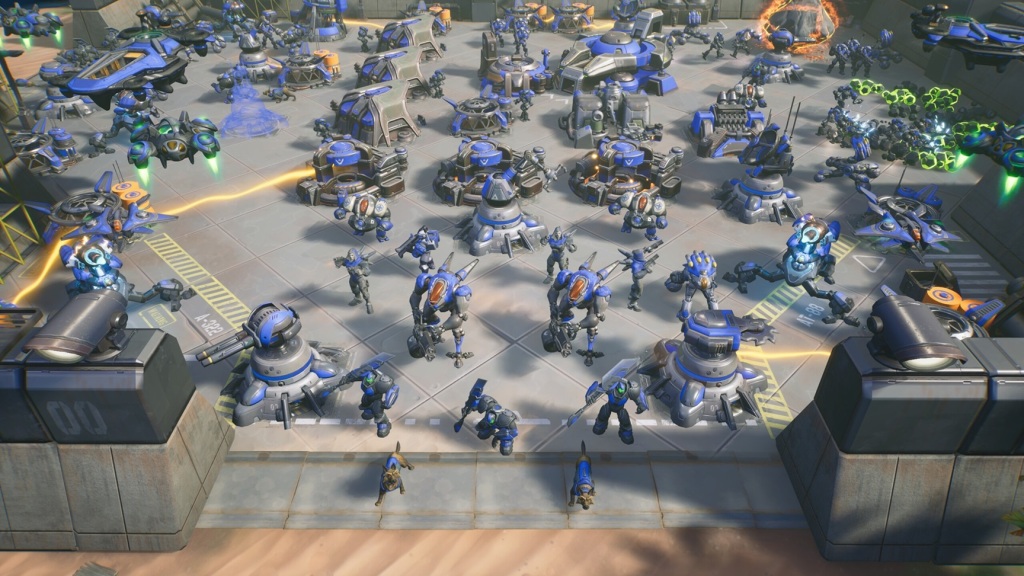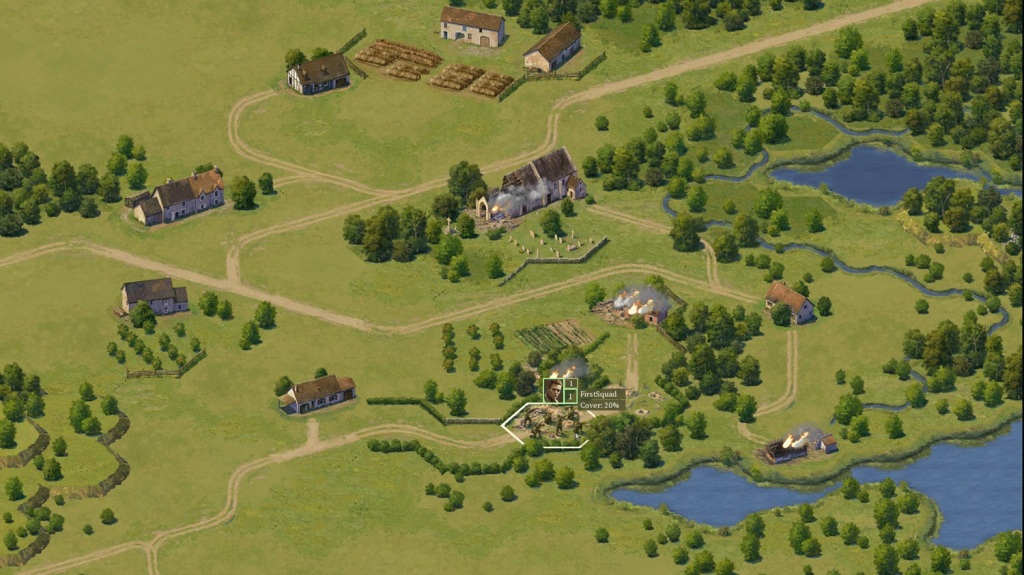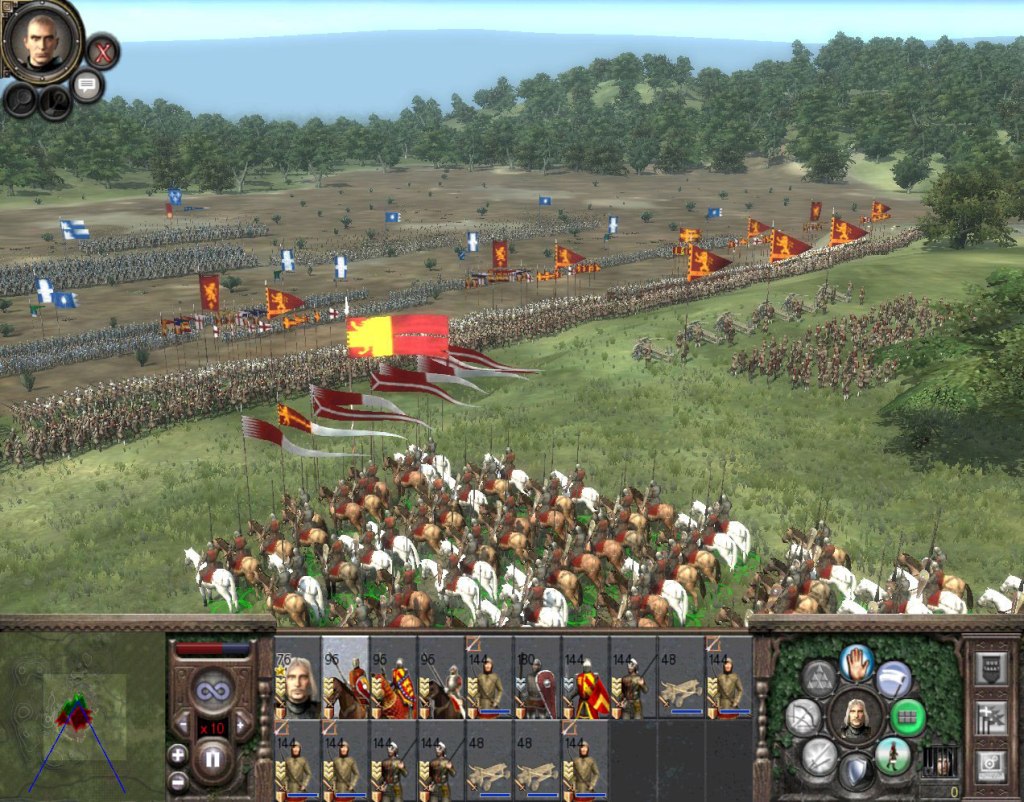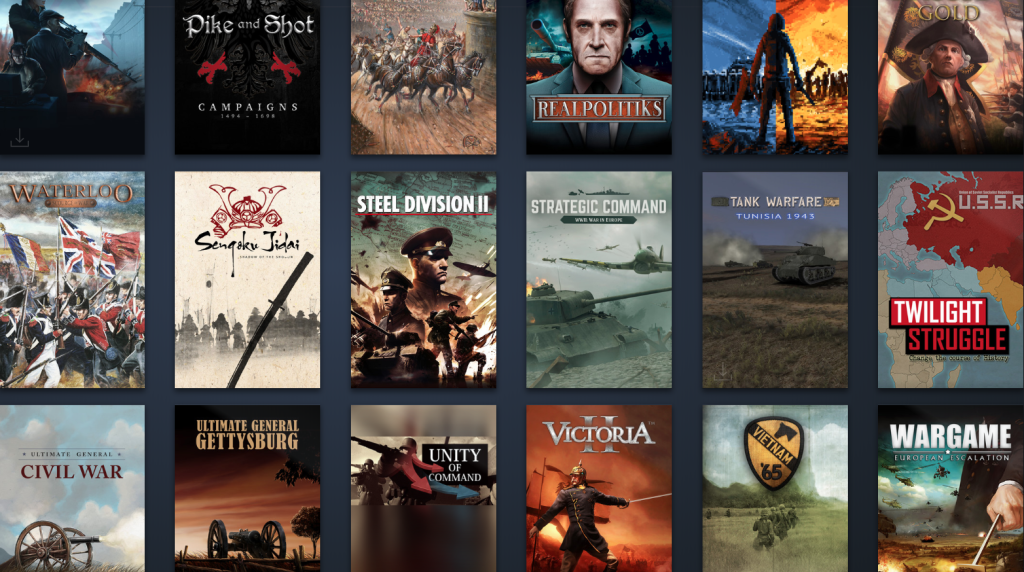
In the past 10 years the gaming industry saw a rise so astoundingly steep that it is hard to track back and list all the factors in a comprehensive and simple manner. Let’s start right now by saying that this decade brought no significant structural innovation. The 90’s saw Sega and Nintendo square it off for console dominance and ended up opening the door into the massification of 3D games. The new millennium widen then track for the console race ahead. Sony’s PS2 and PS3 dominated the market and Microsoft also wanted a piece of that sweet gamer dough and found its treasure on the map marked as the X-box. Simple polygonal shapes were subsequently replaced by high definition models, no more was Mario jumping on 10-faced square turtles and 16-bit games were long departed. Now it was time for the gritty, deeply detailed scars of Marcus Phoenix, the glowing goggles of Sam Fisher, the shinny armour of the Chief, the spectacle of World War 2 and the brutality of Killzone.
With the increase of graphical fidelity came an unrelenting effort for games to be as real as possible, sometimes with astounding results, sometimes with resounding failures. The early years also launched and popularized many of the franchises we play and enjoy today. The PC gaming market had a hard time holding above water in the late 90s and quickly plummeted into a drought at 2000’s onset. Sure, one can name iconic games from this era but can one really say the PC was thriving and was as influential as it is nowadays? So, how the hell did PC come to lead the market in such a way that it is forcing large corporations to finally bow down to the glorious master race? What follows are my own conclusions and views of certain sociological aspects that run much deeper than memes “muh 60 fps PC better! Muh 4K graphics! Bruh steam games”.
Be aware that these are only my thoughts on the subject matter so take out of this what you wish with a pinch of salt. Yes, a lot of games will be left out during this article in very unfair ways but words can only go for so long before they start to get boring.
YouTube– In the first 5 years of the 2010s YouTube was a city-square medieval fair of content creation where everyone was uploading videos of nearly every topic under the sun. This grass-root media of easy, free access, and uncurated material anchored itself in an audience that ranged from pre-teens to late 20s and early 30s.While Youtube existed a couple of years back it was this decade that ultimately turned it into a real alternative to the reign of satellite and cable TV. Content consumption stopped being a passive activity and turned into a on-demand commodity accessed by millions that could not only watch but also create and being watched. And if you’re trying to guess, yes you needed a computer to edit and upload. Smartphones were not nearly as widespread as they are now so to watch youtube you either had a desktop or a laptop. As if there was little doubt left as to how impactful Youtube is as a fore-front for the gaming scene all over check out this 2015 article by Kim Thompson for Think with Google on “Why gamers should be a part of your audience strategy” and the Gautam Ramdurai from 2014 title “Think Gaming Content Is Niche? Think Again“.
The increase demand of computer related job-skills and technological literacy– The entrenchment of technology was nothing new but the big boom of tech-related start-ups and the rise of tech-based solutions that focus on digitizing analogue processes for traditional companies surely made a crater-sized impact in the way we interact with computers. The largest impact was that due to this digitalization process everyone had to adapt: from accountants to HR managers, from store clerks to logistics based operators, from risk assessment firms and banks to financial and operational control, marketing and journalism, medical professionals, etc. No previous body of professionals was left untouched. This perceived (and very real) notion of computer indispensable job skills urged entire countries policies on teaching to change. Some investigators and analysts heralded the new era of smartphones at the decade’s start only for the computer to creep into every household. The PC is no longer just a tool where one could boot up a game from time to time, it turned instead into a necessary hub to access a indispensable and omnipresent new reality.
Easy to access, easy to use– Getting a new gadget became the new form of social flexing. Ripped jeans, eastpak backpacks, and brand clothes were let go for a new iPhone or a new gaming console. The huge variety of phone types, models and brands from the previous decade- remember the Nokia Express Music? The N-Gage? The 7600? Does Motorola V100 ring a bell? The Virgin Lobster half TV/phone should pack itself with all these designs in a lead coffin and go where it’s better, under the sea- were replaced by a bundle of dominant brands packing either IOS (if Apple) or Android (if anyone else). Operating systems that- as a couple of decades prior on the PC- unified the user experience. Linear model lines across the industry created an intuitive consumer experience. Picking a new phone used to be the same as riding a mental incapacitated horse while drunk across a minefield with people shooting at you. Lesser convoluted side-models and lesser experimental designs across the board made buying not only a new phone but other technological appliances such as a computer, a new graphics card or CPU an enjoyable and intuitive experiences. Couple this with online reviews and you get a savvy consumer base that hardly tolerates missteps.
Vocal consumer based– The internet unleashed the ultimate expression of free speech. The means of physical publication required money, industry professionals and an audience. It was a business and as such, returns were expected and content was gated to ensure either quality control at the best of pretext or, in the worst cases, the protection of corporate or governmental interests. Nowadays with online reviews, aggregate sites and all around foruns and social media outlets on which to express their opinions consumers opinion weighs more on corporate decisions than it ever did.
Digital distribution runs the show– Steam, whose humble DRM measures/update tool to Valve games turned into the go-to world renowned marketplace that is today consolidated the idea that digital distribution is the way to go, not only for games but for all kinds of media. Freed from the physical limitations of brick and mortar distribution, allied with a low cost operational expenditure allowed games to arrive at our home computers in an extremely convenient and cheap manner. But more than cheap games and extreme sales, Steam converged all the different gaming pockets under Gabe’s banner. If you wanted to play online you need to either: have friends that played the same game or go scouting around forums. Steam brought together all these different communities and turned itself into the go-to gaming Hub in the PC gaming space. The increase affluence of all kinds of different people with a manner of diversified tastes into a single launcher exposed this community to a wide offering of different games and interests they never even knew existed (I can totally relate to this, heck! That is how I got into mil-sims in the first place). In a way, gaming became more of a humane and social experience than it ever was. There’s little doubt that digital distribution will keep on running the show for the next decade with brick-and-mortar stores getting ever so close to irrelevancy in market-share with due consequences being felt early has a couple of days ago.
League and DotA holding the “games as sports” banner all over- I have to admit that I was always skeptical about this thing called ESports and still am but I guess that’s why professional reports exist as this one from Newzoo titled “Free 2018 Global ESports Market Report”.
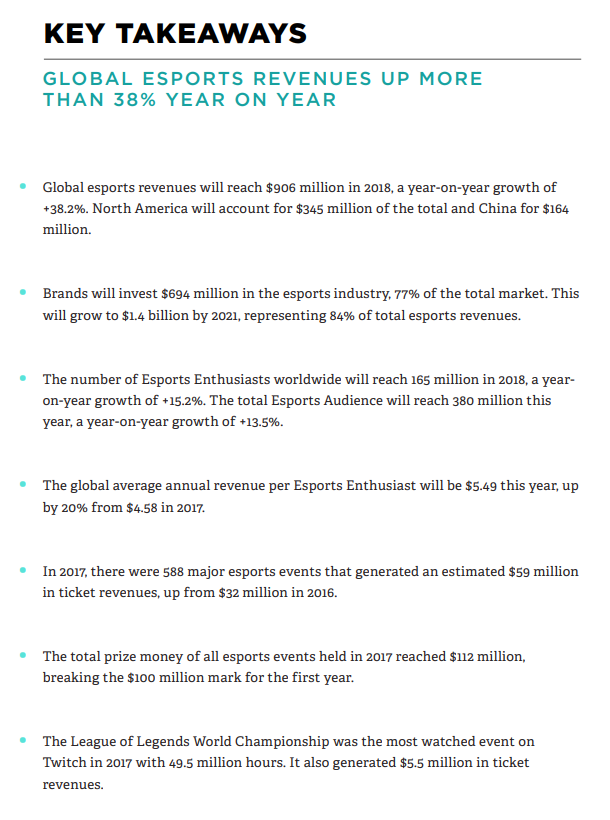
Global Videogame market more than doubles– The first generation to grow up playing video games as an integral part of their daily lives were the Millennials, a generation that got into the job market as the decade was starting around 2008 to 2010. Packing at least one console or one working computer in the house, it shouldn’t come as a surprise to anyone that this was also the generation that jump started this incredible growth and is keeping it going with a Like-for-Like of +7.2%. The Doomsday of PC as a gaming platform is kept at bay by a 2.8% LFL growth and a 24% market share.
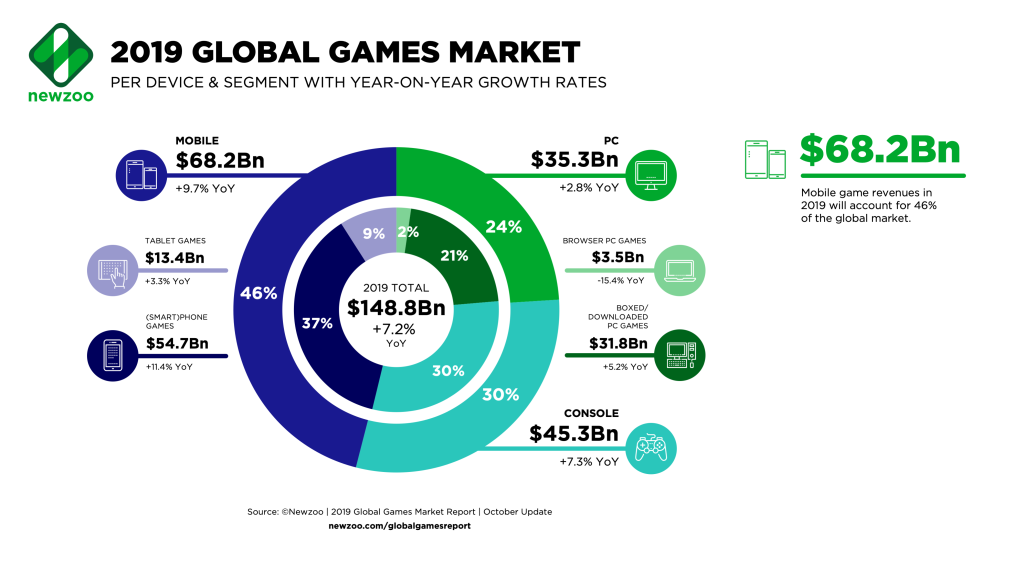
The recent reports show a clear path into the future too, with mobile gaming promising to take command of the ship in the years to come. More the proverbial lightning in a bottle, more than sparse events, technological breakthroughs and genius game design this last decade in gaming is the conjunction and amalgamation of all the trends combined.
When it comes to strategy gaming, no matter how many articles one reads about “Muh strategy is dead! Dumbed down for the masses” opinion I will stand by my idea that the 2010s were, by a large margin, the best years strategy gaming ever saw. Now, now, hear me out. When discussing strategy gaming i’m not only referring to the classical RTS genre. Strategy is a genre so wide you could fit pretty much 1 in every 3 games in it. Not going to fall down the rabbit whole of discussing the details on what a “Strategy Games Is”, just use your common sense and you’ll understand why I considered some odd entries. Overall we’ve seen an increase number of releases with extremely different approaches to strategy some by leaning in the experience to offer a more focused and directed experience, some others focus on blending upcoming new genres with the old adages of strategy. Others try to push a bit further by experimenting with new and novel mechanics and new ways of storytelling while some of those that wished for a grandiose return to the days of yore found solace in the towering amount of remasters that released in the past couple of years.
As soon as 2009 rolled around, the 2006 incredibly-critically acclaimed Hollywoodesque/ Steven Spielberg inspired RTS was releasing it’s final chapter. Yes, Company of Heroes launches Tales of Valor, a sizeable expansion with 3 episodes that brings everyone back to their favourite european theatre: The Normandy campaign. Tiger Ace, Causeway and Falaise Pocket close up the gaps of this fantastic game. The influence of CoH in the RTS can’t be understated by any means. The stale stench of RTS was blown away by this refreshing take on small units tactics that brought as much gameplay depth into the table has cinematic pungency.
While Allies and Germans were juking it out in the outskirts of Normandy in 1944 the Men of War series enters the fray with a larger array of sitius to fight on. Three campaigns that take place in the Eastern Front and Africa has players fighting as all parties involved. Despite having been well received by enthusiasts it still lingered for years to come has a hidden gem. With a really detailed small units tactical combat system, each units loadout was customizable (yes, every single man, not squad), ammo management, 1 to 2 shots kill and a wide array of weaponry and equipment created a considerable barrier for entry.Despite this I still consider Men of War one of the best small tactics games out there, if not the best. Men of War Red Tide brings the story of the “Black Coats” (Soviet Marines) to life and Men of War Condemned Heroes reinstates the memory of those convicted to serve on penal battalions. 1C Entertainment kept on making bank by releasing Assault Squad and Assault Squad 2, a sort of multiplayer only spin off of their previous entries.
Recently 1C published the politic’em’up RealPolitiks and the delightful small tactics medieval brawler Ancestors Legacy. Dawn of War II turned it’s previous formula upside down by focusing more on individual hero units supported by regular grunts. The World War II adventures in the eastern front were far from over, however. Company of Heroes 2 released amidst controversy about its depiction of the Red Army and the soviet forces with russians players rushing to metacritic trying to review bomb the game at release.
Being a kid when the second entry of Europa Universalis proved too much for me to take in, no wonder that, when I started reading online that Hearts of Iron 3 was going to be huge, with over 10.000 provinces, how complex the AI could be and how deep the rabbit hole of the military aspect was trying to go I got pretty overwhelmed. Fortunately HoI- third of its name- got a pretty decent reception and established Paradox Interactive as an interesting in-house development studio in the grand-strategy genre- a publisher to be reckoned with- a special place in the genre they’ve been cherishing ever since with some minor setbacks from time to time, going as far as releasing into the wild the work of modders from the Paradox history affictionados forums, Darkest Hour.
Crusader Kings II, Europa Universalis IV and Hearts of Iron IV remain as some of the most played games around the world. Stellaris, Steel Division, Victoria II, Surviving Mars, Battletech, Age of Wonders Planetfall and Imperator: Rome all had in some way or another Paradox naughty wet finger in their ears.
The year of 2010 also brought forth the biggest RUSE of a trailer (pun intended) since Peter Molyneux started to claim he would go back to create good games or actually finishing them. RUSE was an interesting choice by Ubisoft before they fell into their flagship idea of uninteresting repetitive activities labelled as side quests with maps cream-filled with dozens of icons signaling sprays, flags, towers, sheeps, carrots and the occasional hooker. RUSE was supposed to be a large-scale RTS based on World War II that would put emphasis on the use of fake equipment and misleading tactics to gain the upper hand over your opponent. It ended up being an exercise in Retarded Use of Stealth Equipment (RUSE) with very basic and extremely fast-paced combat that boiled down to a line of tanks firing on one another in a line like some XVII century mechanical abomination. FOV is pretty much non-existent, the campaign was unispired and it got pretty boring pretty quick. It had nice graphics tho but in the end RUSE was the retarded dog that eventually would be abandoned in the woods in favour of the Wargame series. The cold war went glowing hot and Eugen System packed the contestants for european domination with thousands of lovingly detailed units, each with their own loadouts, perks and specific roles.
Wargame became instantly loved and released three installations across nearly a decade, each improving upon the former. Eugen also took another stab at World War II under the guise of Paradox with Steel Division I receiving praise for how innovative it was and criticism that it opted for a fast, competitive paced game instead of a slower, more considerate one. Eugene Systems also released Steel Division II, addressing some of the concerns to a moderate to warm reception by fans, with a strong campaign element a focus on the vast plains of the eastern front as opposed to the enclosed hedgerow green hell of Normandy.
It is undeniable that the Total War series is a mainstay in the scene and, despite stumbling here and there, the assembly line at Creative Assembly keeps on pumping out ever more polished and interesting titles. After tripping over Empire Total War, Sega’s darling studio struck gold with their spin-off of Napoleon, following the adventures of the shortest-grandest emperor of History. Shogun 2 followed suit in 2011 and marked a new standard for the series. Turn back a couple thousand years and returning to the City of the Seven Hills wasn’t the smoothest of chariots ride. Rome II: Total War had more bugs than Caesar had stab wounds. This was a classical tale of an unpolished, visually broken piece of shit of a game that somehow, in an ironic twist of fate it didn’t met its classical tragedy end. CA summoned their legions and has-since to this very day- working damn hard to fix Rome 2, which is now considered by many one of the best, if not the best game in the series. Attila is another spin-off whose sole saving grace are the mod scene and the Age of Charlemagne Campaign Pack.
In the last half decade, those wailing for decent Warhammer games finally got lucky. Skaven-like hordes of players rushed to grab the newest entry of the series: Total War: Warhammer (why not Total Warhammer, CA?). Ditching the historical setting for a fantastical one meant a new world of tactical considerations and possibilities in battle. I’m still on the fence about writing how interesting Warhammer 1 and 2 truly are on the tactical side if one wishes to escape the rock-paper-scissors design trap that turn otherwise interesting games into another run of the mill, samey feeling generic entry. The asymmetry between factions, the introduction of extremely over the top monsters, creatures, factions and machines, the amount of unit types and the tactical implications that arises between their interaction creates an interesting feeling that every fight is different and that, sometimes a single, powerful unit can turn the tide of the battle.
When it comes to their newest entry-The Three Kingdoms- while I haven’t played that much of it the critical reception seems to place it amongst the best in the series. We’ll see about that, here’s hoping.
Somehow during the early days of this decade, 2K Games along with Firaxis happened to stumble upon the forgotten gold mine that was turn-based strategy and in essence “turned the basis” (Ah!) of the genre on it’s head by resuscitating and popularizing the alien IGO-UGO fuck’em’up. Ditching the large-squad of average grunts that the 1994 original packed for a smaller team of very specialized individuals, for the new X-COM personality is the new black. The open nature of the original campaign saw it self being rebuilt to a more focused and confined experience with the game designers dictating its pace. The base management also reduced the amount of micromanagement needed to operate the most elite fighting force in the world and with good reason. When playing a bit of the original I remember thinking why would I have to go through the hassle of buying (yes, buying!) individual grenades for each member of my squad? Unless you’re the kind of micromanager Napoleon was, getting enough explosives to go around shouldn’t be something “The Commander” needed to be concerned with!
X-COM 2 takes place in a world where humanity has been defeated, no matter how hard your group of charismatic soldiers fought in the previous iteration most of us have embraced our new owners. Now you take charge of a rag-tag team of resistance fighters against their aliens overlords. The gist is pretty much the same, while making an offer to bring a different flavour to setting and at the same time increasing the amount of tactical options available. Most notably the ambush mechanic that fits the theme just perfectly. Too bad for the Avatar Project “time limit” but there are plenty of mods available that allows the player to customize that to their liking.
Let’s say the green blood splattered all over your vibroblade is starting to smell weird, dripping into your boots and wetting your socks and you want nothing more than to come home, and relax while you push and shove other civilizations out of the way. Then what you’re looking for is probably a game of Civ V or VI. I’ve played pretty much every single Civ. game that came out and to be honest after 4 I started to lose interest in the series except for notoriously i’ll received Beyond Earth, an assessment to which I profoundly disagree. There’s just something captivating about playing a 4X game in space where you lead an expedition to colonize a new planet and your most immediate enemies are not other civilizations or barbarians but rather creatures and monsters the size of cities and mountains. Of course, how silly of it would be if I forgot to mention the fantastic Endless Legend, the 2014 pretty boy from Amplitude Studios that stamped the Fantasy 4X with a new, higher mark than its peers. Each civilization is clearly unique and plays rather different from one another. Combat has also an interesting twist: Equip your heroes with special items, use special abilities and make short work of your opponents by taking advantage of terrain advantage.
If 40K big-bulky-space-manly-man in industrial looking armour fighting purple bugs while a cryptic, ancient, fallen alien race schemes in the background are your thing then perhaps you should try Starcraft II with it’s …big bulky manly man in industrial looking armour fighting purple bugs whil…. wait a minute! Scratch that!What else can I say about Starcraft II influence in the RTS space? Everyone knows Starcraft and if you don’t you’ve probably heard about it at some point! If you’re like me and suck online just play the single player campaign and expansions! Go on.
Oh did I mention Age of Empires is back? I mean, new expansions like The Forgotten, Rise of Rajas and the African Kings for the original AoE II and in 2018-2019 Age of Empires I and II, respectively got definitive editions that bring 4K graphics and gameplay improvements that give these 20 year old gems a facelift. While we are talking about remasters why not bring up Homeworld Remastered Collection? And as we’re at it I’ve been having a go at the prequel- Homeworld: Deserts of Kharak and enjoying the high-ground mechanic, too bad that in the heat of battle it mostly boils down to doomstacks ganging on other doomstacks. I hope it gets interesting deep into the campaign.
Oh! Oh! Cossacks made a return too! And Blitzkrieg! And Sudden Strike! And Starcraft! See where I’m going with this? A lot of remasters happened in the past 10 years and that’s all fine and dandy for the good ol’ late twenties me that grew up playing a lot of those.
The Indie scene has been so influential and so disruptive that I believe it’s of no use listing games here. Indies have been all over the place and have mastered the class of genre-bending to an extreme degree. Be it small units tactics with roguelike elements, rats and other animals squaring it off in a communistic based society, planning minimalistic metro stops, taking the groove of Advance Wars back a couple hundred years into the medieval age or bring turned based combat into the fast gunslinging world of the wild west.
What if all you want is to become Bronn in a GoT world and lead your company of mercenaries in a brutal turn by turn basis where heads are smashed, fingers broken, arms hacked and legs ripped? Hell, maybe you’re a hack and want to exterminate humanity by creating your own Plague. Run a Zoo or a Coaster Park? How about spy and try to bring destruction to influential corporations? The indie scene has so much to offer and it just seems to keep on growing and growing and is taking huge steps mainly in the mobile market.
Wargames in general have seen a surprising amount of new releases in the past couple of years, Combat Mission have been churning out their usual baroque masterpieces continuously improving upon each iteration, increasing detail and realism. The year 2010 also marked the date when Battle Academy saw the light of the day and manage to bring approachability and intuitive design as main features. Armored Brigade and Flashpoint Campaigns are love labours of intricate design and gameplay. Pike and Shot, Sengoku Jidai and Field of Glory II have grognards time-traveling all over humanity most interesting battlefields.
Graviteam Tactics is leading in terms of visual fidelity and overall 1:1 combat realism in its main entries and DLCs. The mind behind the Darth Mod mods for Total War came up with Ultimate General: Gettysburg and a couple of years later with Ultimate General: Civil War, both entries are masterclasses in slick-n-simple gameplay commands, beautiful imagery and complex system underneath the hood that had me playing the first engagement of Gettysburg more than any other level in any other game.
COIN enthusiasts also find solace in Every Single Soldier Afghanistan ’11 and Vietnam ’65 and those that love Air and Naval Operations have their darling pretties in CMANO and Cold Waters. Overall, wargames have seen a surprise jump into mainstream strategy gaming with a couple of entries nearly breaking the wall of overly complex and hidden mechanics, two hundred page manuals and obsolete, incomprehensible UIs.
In the end, by reflecting back on this former decade I can safely say that we saw great releases, instant classics and have a more abundant and rich choice today than we have ever had. New trails are being blazed and the upcoming 10 years look as promising as the 10 years prior.
Follow Strategy and Wargaming Socials
If you enjoy Strategy and Wargaming, then you need to follow its socials. Are we the best strategy gaming website around? I would say so. Heck, what other options do you have? The Wargamer? Please.
So why not give us a follow on the cesspool that is Twitter, or join the 1000 other geriatric patients on Facebook? Or subscribe down below? Or maybe do everything? I don’t care, I’m not your grandmother.
If you enjoyed the article, consider buying me a coffee!
I’ve been running Strategy and Wargaming at my own expense since 2017, with only the ad revenue to cover the hosting, with everything else being done by me. So, if you’re an avid reader, you can afford it, and want to support the website, please consider Buying Me a Coffee by clicking this link, for as low as one euro! If you do, just know that you’re helping out a lot and contributing so that Strategy and Wargaming can continue growing!
























